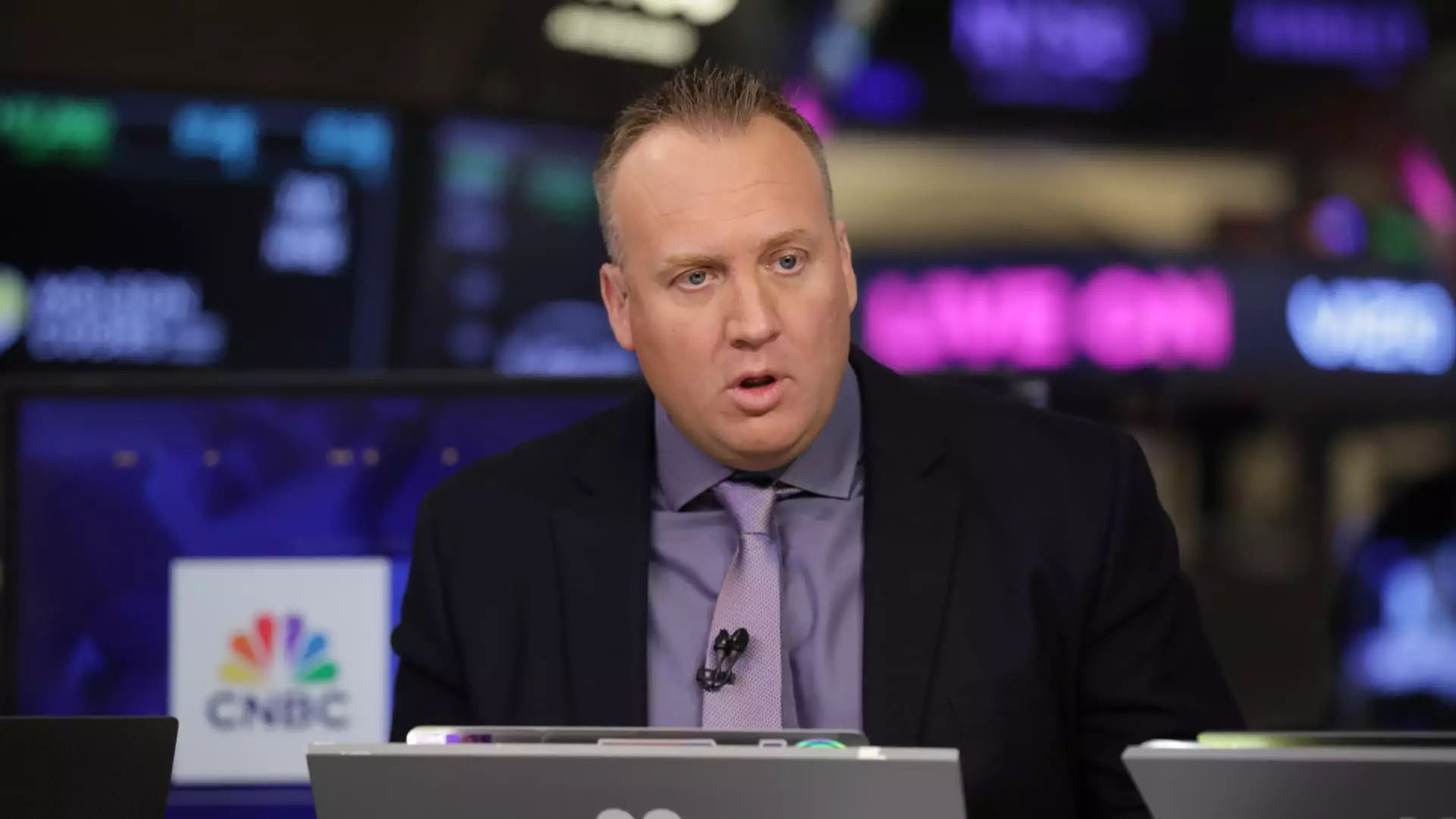In a world where investment strategies often lack conviction, Josh Brown, the CEO of Ritholtz Wealth Management, bravely stands out by making Uber his largest personal stock holding. His daring proclamation on CNBC’s “Halftime Report” has sent ripples across Wall Street, with Brown labeling it as his “highest conviction pick,” anchored in the impending revolution of autonomous driving technology. As we plunge into the futuristic landscape of robotaxis, Brown’s perspective merits deliberate analysis. Is he, in fact, the prescient investor he claims to be, or are we witnessing just another instance of misplaced optimism?
The confidence emanating from Brown’s statements stems from the robotaxi boom being led by industry giants like Tesla and Waymo. Here, he persuasively argues that the elimination of human drivers—widely acknowledged as the most significant cost center for ride-hailing services—positions Uber to reap substantial rewards. He envisions a lucrative future where Uber becomes an integrative partner with multiple autonomous technology providers, gaming the system to capitalize on reduced operational costs. The implications of this shift are profound; instead of relying on transient drivers, Uber could optimize profits and enhance customer experiences—all while transforming its role from merely a ride-hailing service to an invaluable player in the emerging autonomous ecosystem.
Market Reaction and the Race for Dominance
The immediate market reaction to Brown’s assertions was palpable, culminating in an impressive 8% surge in Uber’s share price following the announcement of robotaxi services from Waymo being integrated into Uber’s offerings in Atlanta. This expansion, notably, represents a pivotal milestone in the competitive landscape among ride-hailing services, particularly as Tesla deploys its own autonomous robotaxis in Texas. The stakes are incredibly high, as well as the competition—Uber faces not only established players like Waymo but also formidable Chinese rivals like Baidu’s Apollo Go.
However, are these fluctuations in stock price genuinely reflective of long-term value? While a 52% increase in share price since the year began sounds promising and alluring, it’s critical that potential investors examine whether this growth is sustainable or simply a byproduct of market enthusiasm surrounding the autonomous technology bandwagon. The fact that Uber’s stock hovers below the $100 mark may appear trivial; yet, it raises significant questions about undervaluation and market sentiment. Why, in a climate of such forward momentum, is Uber’s market capitalization not reflecting its potential?
The Road Ahead: Risks and Realities
For Brown, resisting the urge to take profits any time soon seems to be an active choice underscored by a certain conviction. “I don’t know why it’s under $100 a share— it makes no sense to me,” he opines, suggesting robust confidence in Uber’s trajectory. Yet while Brown’s optimism is infectious, investors must navigate the reality of inherent risks. The path toward complete autonomy remains laden with uncertainties—from regulatory hurdles to technological glitches that could reverberate throughout the industry.
Moreover, it’s essential to recognize that while Brown advocates for Uber, he might not encapsulate the broader sentiment of conservative investors. In an era characterized by rampant speculation, the allure of seemingly progressive investments frequently masks deeper concerns about profitability and long-term growth sustainability. Uber’s expansion into autonomous driving should be observed with cautious enthusiasm, as overly optimistic projections could lead investors into a precarious situation reminiscent of prior tech booms.
Final Thoughts: Navigating the Fine Line Between Confidence and Reality
As the market collectively awakens to the autonomous driving revolution, Uber stands at a critical juncture. Influential voices like Josh Brown’s wield considerable sway, but the cautionary tales of past tech bubbles loom large. While he makes compelling arguments for the potential advantages that may lie ahead, any investor must tread carefully, balancing optimism with pragmatism. Uber, as a data-driven tech entity straddling the worlds of transportation and innovation, only intensifies the complexity—after all, what’s more volatile than the intersection of finance, technology, and consumer behavior? As we watch this unfolding narrative, one thing remains clear: the stakes are undeniably high, making every movement in the stock market thrilling yet precarious.

